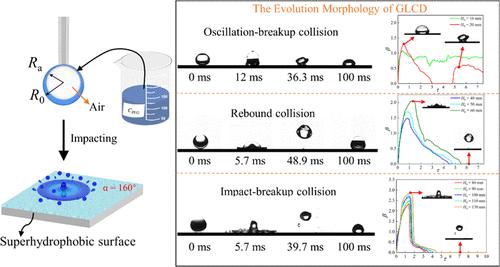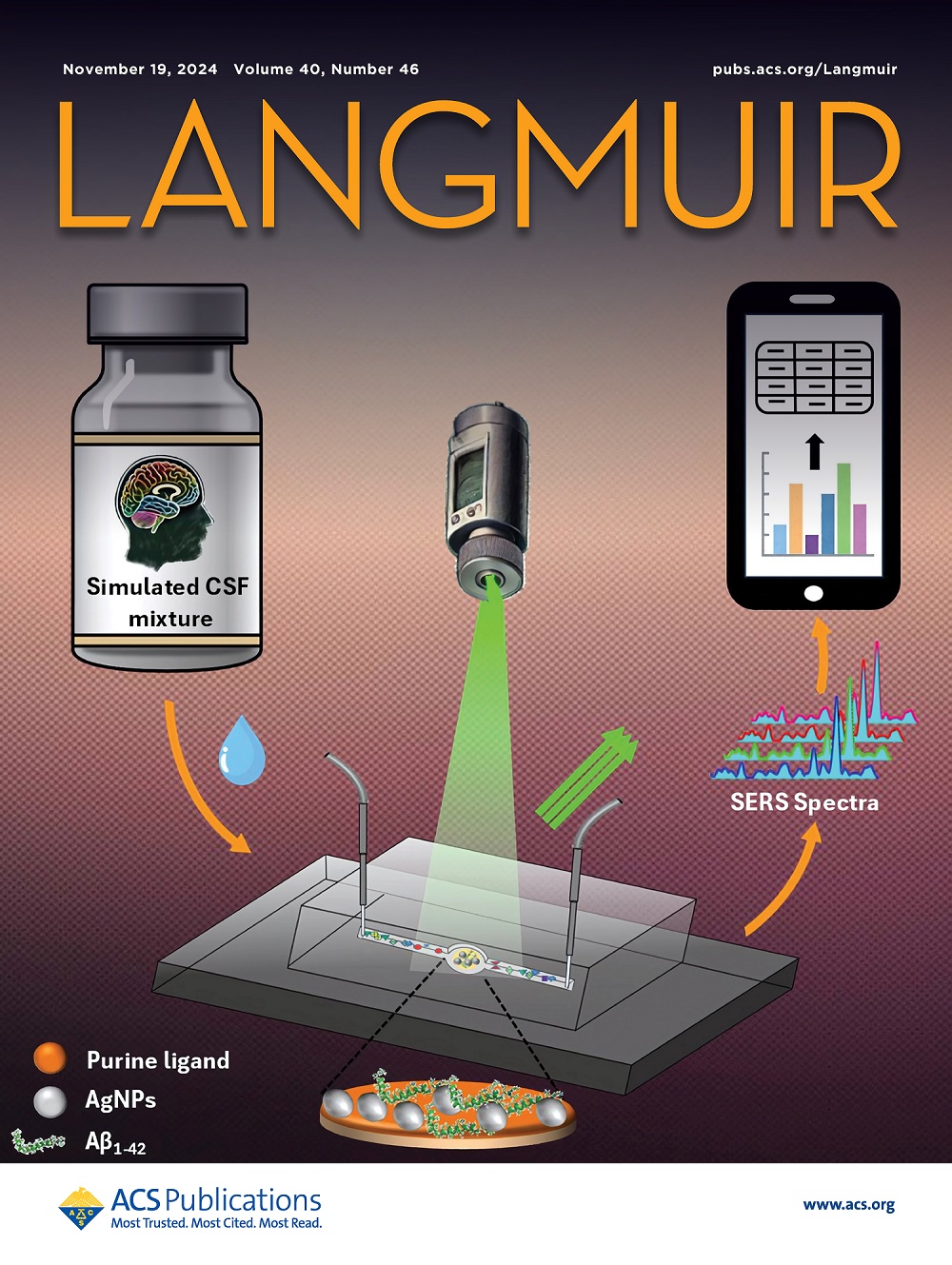Experimental Study of Gas–Liquid Compound Droplet Impact on Superhydrophobic Surface
IF 3.7
2区 化学
Q2 CHEMISTRY, MULTIDISCIPLINARY
引用次数: 0
Abstract
The impact dynamics of gas–liquid compound droplets (GLCD) on surfaces play a crucial role in optimizing processes such as atomization, coating, and microencapsulation. The dynamic behaviors of GLCD impacting superhydrophobic surfaces under varying impact heights, viscosities, and gas–liquid volume ratios (Φ) were investigated via high-speed photography. Three collision categories are defined according to GLCD morphology evolution under different parameters, i.e., oscillation-breakup, rebound collision, and impact-breakup. As the impact height increases, the occurrence of droplet breakup shifts progressively from the retraction stage to the spreading stage. Notably, the maximum rebound coefficient of the compound droplet initially increases and then decreases with increasing impact height, and finally increases again due to the bubble breakup, which differs from the behavior of the homogeneous droplets. Furthermore, the maximum spreading and rebound heights of the GLCD are suppressed by increasing the liquid-phase viscosity. For Φ = 0.48 GLCD, increasing the liquid-phase viscosity from 4.7 to 5.5 mPa·s raises the critical breakup impact height from 90 mm to 120 mm. Meanwhile, the average dimensionless breakup time also increases from 0.54 to 1.72. As the Φ increases, the liquid film of the GLCD gradually thins, resulting in a decrease in the maximum spreading coefficient and enhanced probability of droplet breakup. Additionally, increasing the Φ from 0.48 to 0.56 leads to an increase in the average dimensionless breakup time by 0.88. This study provides a fundamental understanding of the dynamic behavior of compound droplets and offer valuable insights for related engineering applications.

求助全文
约1分钟内获得全文
求助全文
来源期刊

Langmuir
化学-材料科学:综合
CiteScore
6.50
自引率
10.30%
发文量
1464
审稿时长
2.1 months
期刊介绍:
Langmuir is an interdisciplinary journal publishing articles in the following subject categories:
Colloids: surfactants and self-assembly, dispersions, emulsions, foams
Interfaces: adsorption, reactions, films, forces
Biological Interfaces: biocolloids, biomolecular and biomimetic materials
Materials: nano- and mesostructured materials, polymers, gels, liquid crystals
Electrochemistry: interfacial charge transfer, charge transport, electrocatalysis, electrokinetic phenomena, bioelectrochemistry
Devices and Applications: sensors, fluidics, patterning, catalysis, photonic crystals
However, when high-impact, original work is submitted that does not fit within the above categories, decisions to accept or decline such papers will be based on one criteria: What Would Irving Do?
Langmuir ranks #2 in citations out of 136 journals in the category of Physical Chemistry with 113,157 total citations. The journal received an Impact Factor of 4.384*.
This journal is also indexed in the categories of Materials Science (ranked #1) and Multidisciplinary Chemistry (ranked #5).
 求助内容:
求助内容: 应助结果提醒方式:
应助结果提醒方式:


